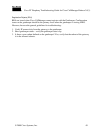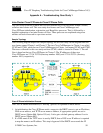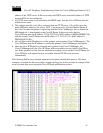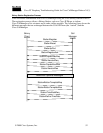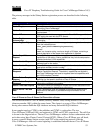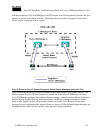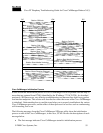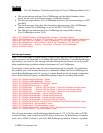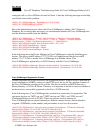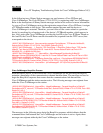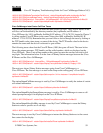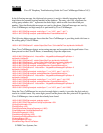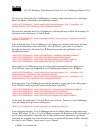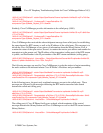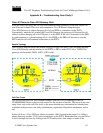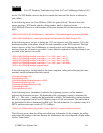
Cisco IP Telephony Troubleshooting Guide for Cisco CallManager Release 3.0(1)
© 2000 Cisco Systems, Inc. 57
routing the call to a Cisco IP Phone located in Cluster 1, then the following messages would help
you find the cause of the problem.
16:02:51.671 CCM|RouteGroup - DeviceName=’’172.16.70.245’’
16:02:51.671 CCM|RouteGroup -AllPorts
Part of the initialization process shows that Cisco CallManager is adding “Dns” (Directory
Numbers). By reviewing these messages, you can determine whether the Cisco CallManager has
read the directory number from the database.
16:02:51.671 CCM|NodeId: 1, EventId: 1540 EventClass: 2 EventInfo: Call control started
16:02:51.843 CCM|ProcessDb - Dn = 2XXX, Line = 0, Display = , RouteThisPattern,
NetworkLocation = OffNet, DigitDiscardingInstruction = 1, WhereClause =
16:02:51.859 CCM|Digit analysis: Add local pattern 2XXX , PID: 1,80,1
16:02:51.859 CCM|ForwardManager - Started
16:02:51.984 CCM|CallParkManager - Started
16:02:52.046 CCM|ConferenceManager - Started
In the following traces the Device Manager in Cisco CallManager is statically initializing two
devices. The device with IP address 172.17.70.226 is a Gatekeeper and the device with IP
address 172.17.70.245 is another Cisco CallManager in a different cluster. That
Cisco CallManager is registered as an H.323 Gateway with this Cisco CallManager.
16:02:52.250 CCM|DeviceManager: Statically Initializing Device; DeviceName=172.16.70.226
16:02:52.250 CCM|DeviceManager: Statically Initializing Device; DeviceName=172.16.70.245
Cisco CallManager Registration Process
Another important part of the SDI trace is the registration process. When a device is powered up,
it gets information via DHCP, connects to the TFTP server for its .cnf file, and then connects to
the Cisco CallManager specified in the .cnf file. The device could be an MGCP Gateway, a
Skinny Gateway, or a Cisco IP Phone. Therefore, it is important to be able to discover whether or
not devices have successfully registered on the Cisco AVVID network.
In the following trace, Cisco CallManager has received new connections for registration. The
registering devices are “MTP_nsa-cm1” (MTP services on CCM1), and “CFB_nsa-cm1”
(Conference Bridge service on CCM1). These are software services running on
Cisco CallManager but are treated internally as different external services and are therefore
assigned a TCPHandle, socket number, and port number as well as a device name.
16:02:52.750 CCM|StationInit - New connection accepted. DeviceName=, TCPHandle=0x4fbaa00,
Socket=0x594, IPAddr=172.16.70.228, Port=3279, StationD=[0,0,0]
16:02:52.750 CCM|StationInit - New connection accepted. DeviceName=, TCPHandle=0x4fe05e8,
Socket=0x59c, IPAddr=172.16.70.228, Port=3280, StationD=[0,0,0]
16:02:52.781 CCM|StationInit - Processing StationReg. regCount: 1 DeviceName=MTP_nsa-cm1,
TCPHandle=0x4fbaa00, Socket=0x594, IPAddr=172.16.70.228, Port=3279, StationD=[1,45,2]
16:02:52.781 CCM|StationInit - Processing StationReg. regCount: 1 DeviceName=CFB_nsa-cm1,
TCPHandle=0x4fe05e8, Socket=0x59c, IPAddr=172.16.70.228, Port=3280, StationD=[1,96,2]



